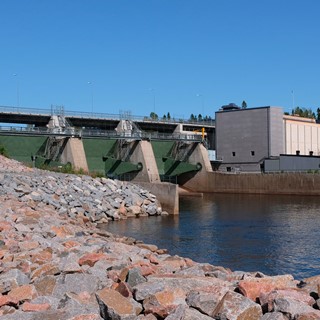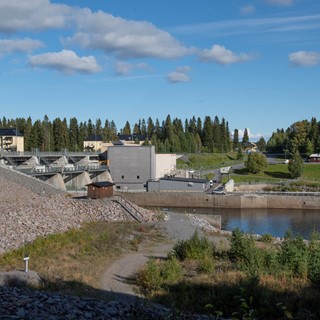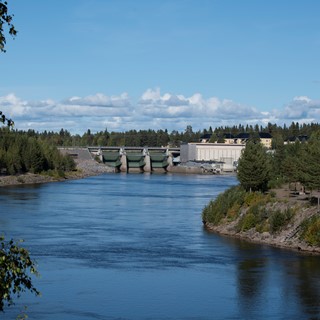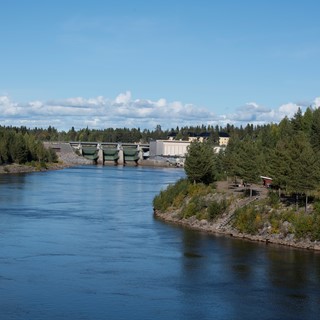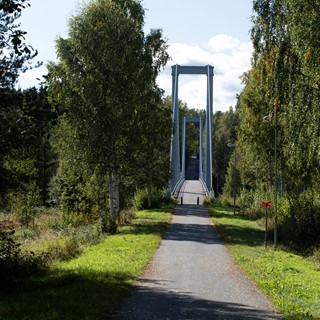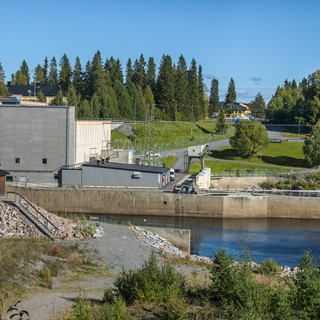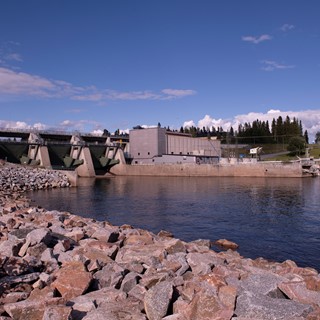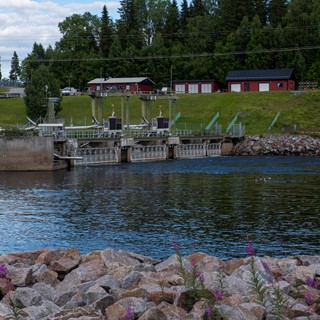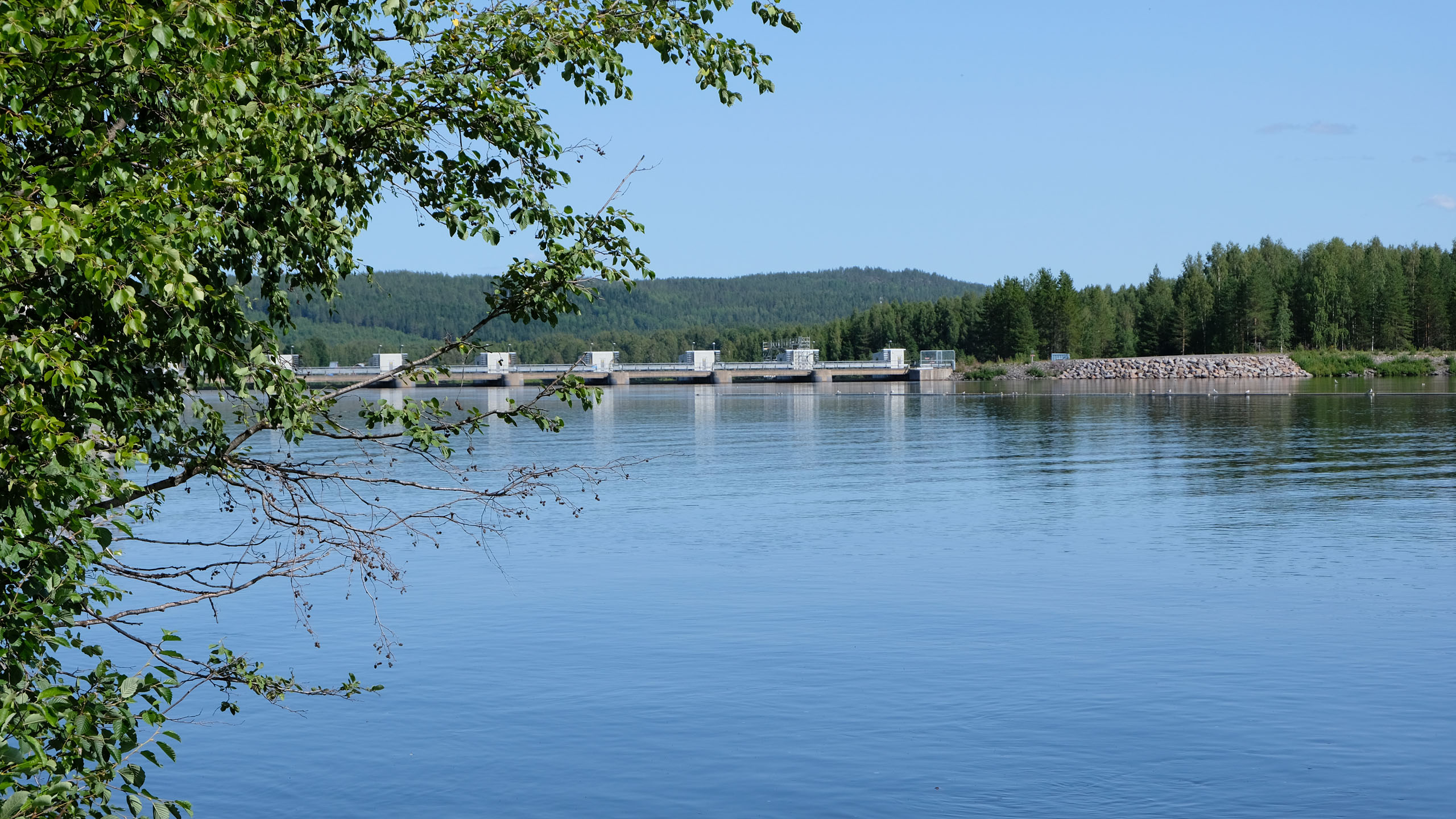History
The power plant in Boden was built between 1967 and 1972, in the later stages of the River Lule Älv’s exploitation phase. What’s different about Boden’s power plant is its central location in the town of Boden. The location of the power plant also meant that the facility could be built without problems of remoteness, long commutes and mountain storms that were a fact of life at many other power plants along the Lule Älv. Nor were any new homes needed for operations staff or construction workers.
The power plant was built above ground with an unusually small dam. Due to its proximity to the railway and nearby towns, this project became more industrial than other projects at the time. Bended reinforcement bars from the ironworks in Luleå and form plywood sheets were used for the concrete moulds, which could be cleaned and reused. A further innovation on the site was that both workers and office staff had to punch in their presence at work.
Boden’s power station utilises the heads of three rivers, the Tångforsen, the Bodforsen and the Näsforsen. The dam blocks the tail race of the River Bodån, and the water is led out into the Lule Älv instead, through a 400-metre tunnel and a canal of 200 metres. The top of the dam above the river was designed to work as a public road, and thus became the Swedish Transport Administration’s cheapest bridge across the Lule Älv.
The power plant has been expanded for a water discharge of 680 m3/s, and has a head of 12.8 metres. The power output is 80 MW, divided over two power generation units with Kaplan turbines. The facility consists of two earthen dams, a spillway section with three openings, a powerhouse with two intakes, and a drainage canal of 1,200 metres.
With the construction of Boden’s power plant, the last spawning sites for salmon and sea trout in the Lule Älv disappeared. To compensate for this, Vattenfall created a fish farm in Heden, just west of Boden. Heden’s fish farm was built in 1962, and is home to the breeding salmons that have been caught through central fishing in Boden. When it’s time for roe to be released, the salmons are ‘milked’ for roe and milt. The fertilised roe hatches at the facility, and after around two years, the fry are released in the lower part of the river to continue on into the sea. Salmon farming is necessary for the number of salmons not to decrease, as man has hindered salmon’s natural run.
Images
All pictures below are part of the power plant's history. All images are copyrighted. You may use the images for personal use but the images may not be used in commercial contexts or printed matter without our permission. Click on the pictures to enlarge them.
Stories
Here you can read other people's stories about the power plant. And if you have your own story, please share it. Whether you want it to be published on the site or not, we are interested in all stories.
Do you have a story about the powerplant or life around the river?
Send us your story
